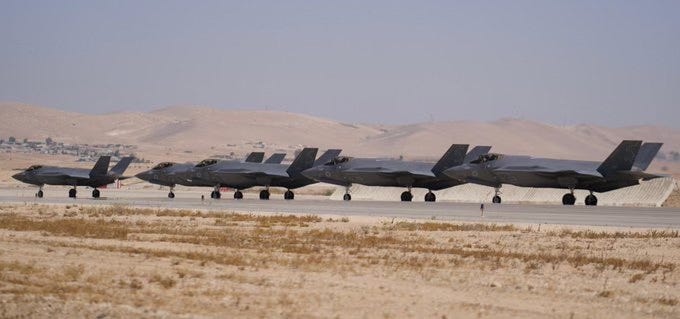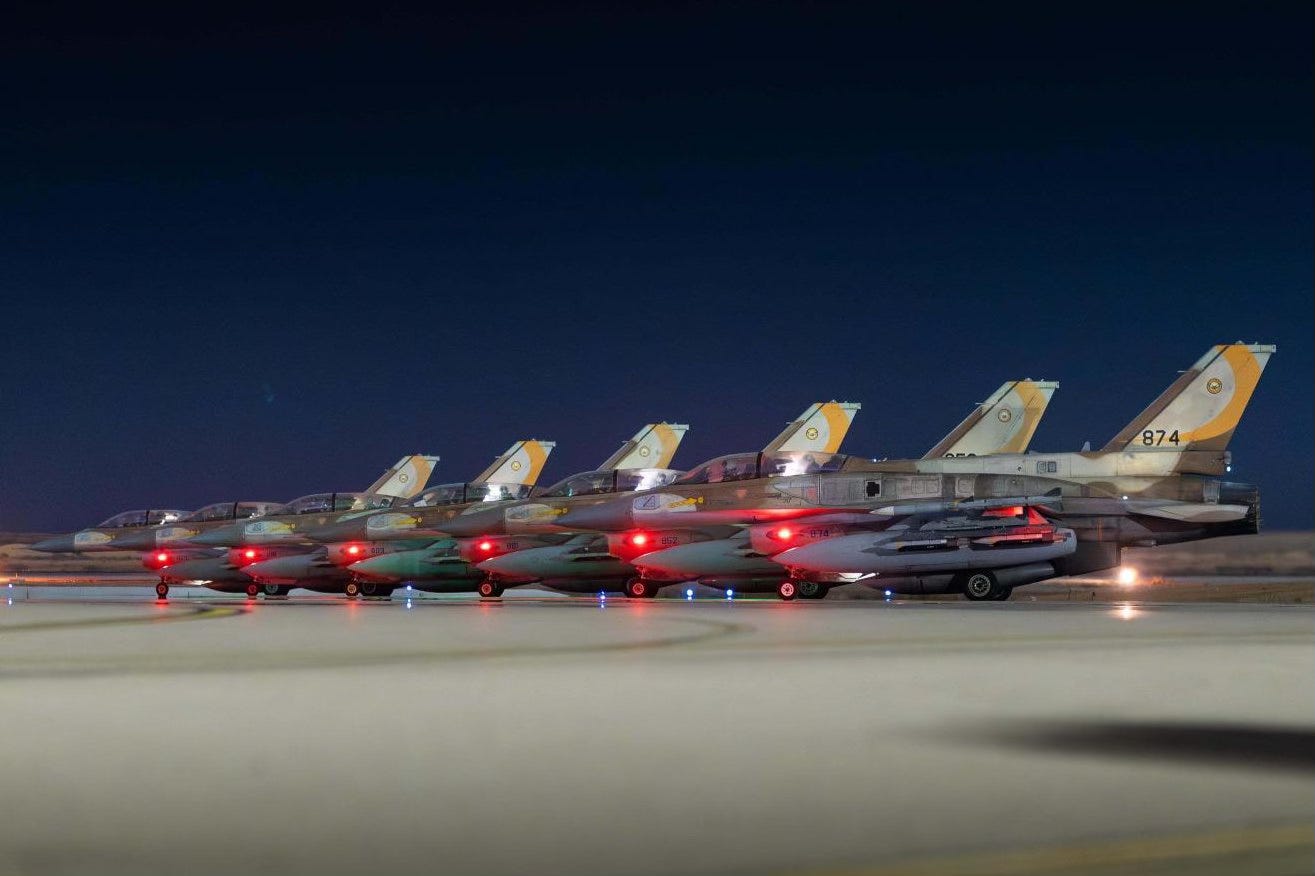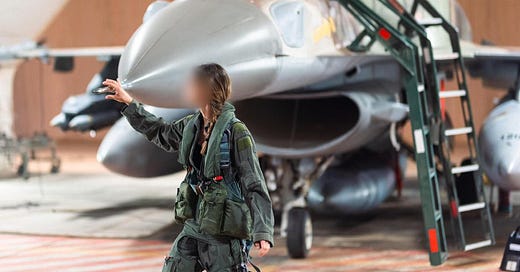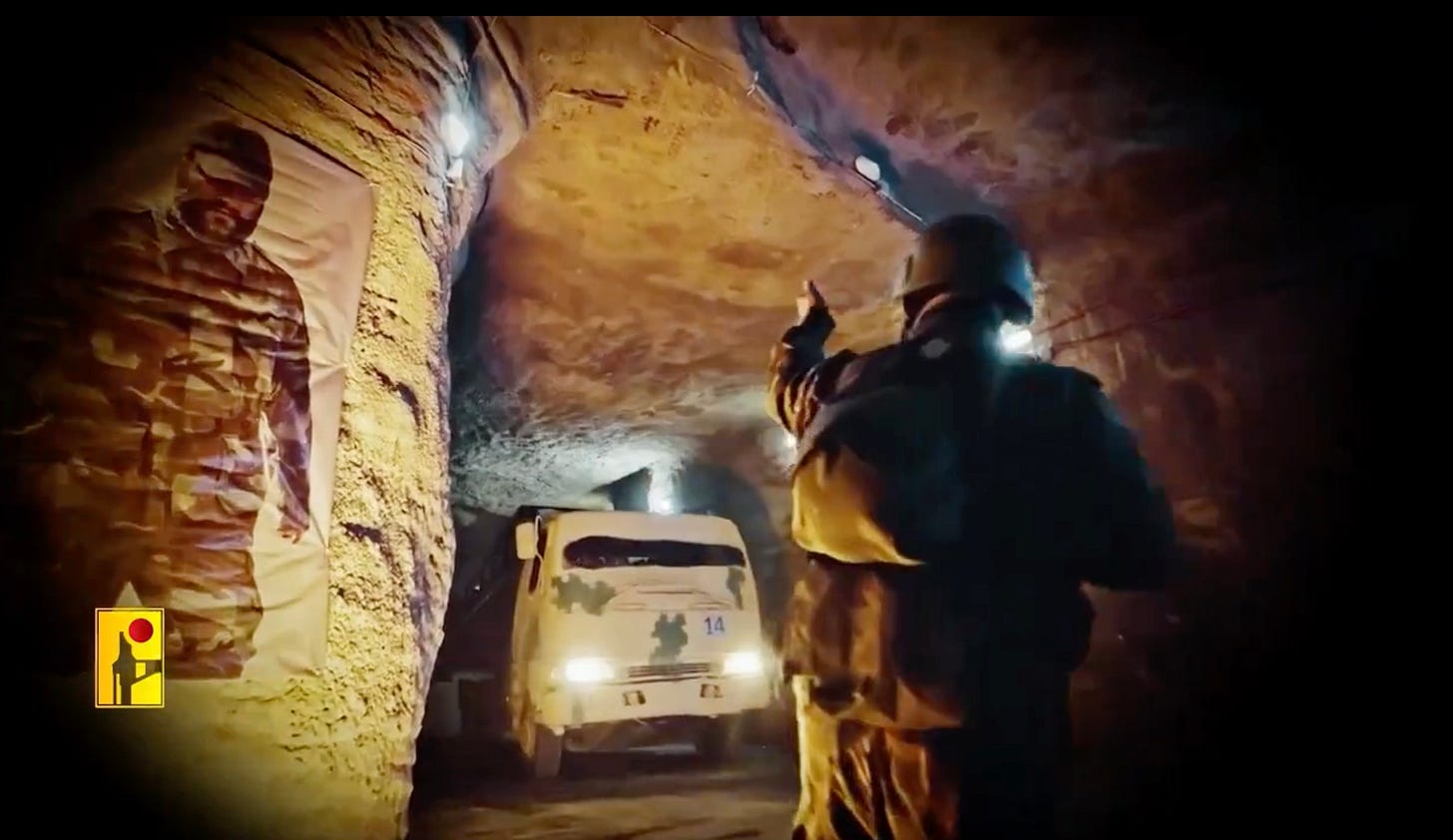Does any country in the world have a more capable air arm than Israel? Certainly, when it has been combined with excellent intelligence and attainable objectives, it has had a dramatic effect on the Middle East during the past 18 months.
The power of this air force allows Israel a more equal relationship with the US than many of its other allies. But at the same time, its use without a coherent political strategy for the region might result in chaos rather than security.
On the first night of the offensive against Iran, Israel had 220 combat aircraft in action. By way of comparison, opening Nato strikes against Colonel Ghaddafi’s Libya in 2011, the Royal Air Force managed six strike planes, two of which went unserviceable en route. Both of these missions were against targets far away, twice as far in fact comparing Libyan and Iranian missions, where the number of tankers available to refuel those jets was limited, but the point remains about the scale of effort – even today against a target at comparable distance, the RAF would struggle to employ more than a dozen jets.
There is no doubt that Israeli performance has excited something akin to wonder among many professionals in Nato countries. “Every military needs an edge”, said British chief of defence staff Admiral Sir Tony Radakin after last October’s Israeli strikes on Iran, “Russia is showing us how not to fight, and Israel, in its response to Iran, has shown us the disproportionate advantage of modern ways of fighting”.

Having used a range of drones, stealthy F-35s, and home-developed long-range missiles to destroy Iranian surface to air missiles and radars, they gained air supremacy over western Iran in 48 hours. By Sunday many of the attacks over cities like Tehran or Isfahan were being prosecuted with laser guided bombs, of which the stockpile is far larger.
Even the United States, which is busy reinforcing its assets in the Middle East, would not have found it easy to achieve last week’s opening performance or that of the second night when 70 Israeli jets operated over the Tehran region. We must remember though that this power, used badly, has had terrible consequences.
During the first 25 days of operations over Gaza, one study has claimed, the IDF (with some artillery but very largely airpower) killed more than 5,000 civilians. The Israeli military itself said it had dropped 6,000 bombs during the initial week.
By way of comparison (forgive me RAF friends, because I recognise that Britain’s air force is more effective than that of many European allies), in the 2011 Libya campaign, the UK national stockpile of laser guided bombs was fewer than 1,000 and quickly exhausted.
The air force’s role in the Gaza tragedy was conditioned by many things: the intelligence was inadequate compared to subsequent operations against Hezbollah and Iran; the Strip is so densely populated; IDF targeting guidelines were changed to raise the numbers of civilian deaths it was prepared to incur to hit Hamas commanders at various levels; and the objectives of that offensive, now as then were confused. Was it to coerce Hamas into returning the hostages, destroy its armed elements, or crude revenge for what the Palestinians had done on 7thOctober?
For this blog though the relevant issue is not whether any western air force would have wanted to act in this way, that’s highly doubtful given the suffering it caused, but whether it would have been capable of it? And I would say that apart from the Americans the answer would undoubtedly be no, and even with them striking hundreds of targets a day would have required a deliberate build up of forces.
The offensive last September against Hezbollah, the Lebanese armed group backed by Iran, was by contrast dramatic both in impact and effect to that in Gaza. It started with a highly unusual intelligence operation – exploding pagers and walkie talkies to disable the organisation’s commanders – and continued with a targeted destruction of much of its missile arsenal as well as armed units.
Reliable open-source tallies of the losses (in Lebanon the armed groups publicised their losses, unlike Gaza where they conceal them) indicated thousands of these combatants had been killed. It would appear that something like 40-50% of Lebanon’s death toll fell into that category. That meant less harm to non-combatants than in Gaza or indeed certain Coalition operations in Iraq, and quickly brought Hezbollah to the point where it abandoned its operations in support of the Palestinians, seeking a ceasefire.
When the Syrian regime of Bashar al-Assad fell last December, an event preceded by only a few days warning, the IDF went from a standing start to a 400-sortie aerial blitz that destroyed much of the county’s air defence network, most of its fighter jets and naval vessels. The justification given, that it was to prevent advanced weapons falling into the hands of jihadists may not have convinced many, but the point again was of the rapid deployment of overwhelming airpower, and preparation of this week’s attack on Iran by consolidating Israeli control of Syrian airspace.
Then we get to the Iran operation. Will it prove an example of brilliant initial execution but poorly defined objectives, or could it reshape the entire Middle East order to Israel’s advantage? A proper analysis will have to wait until we get a better idea of how it ends, but the salient points about the power of this air arm can be summarised:
- It prepares for war not airshows. Much of its fleet has been modified to boost its range, and each combat type has a suite of weapons that can be used to attack targets anything from 20-300km away. By my count there are eight different ‘stand off’ weapons available to Israeli F-16 and F-15 pilots versus two for British Typhoons and none for its F-35s.

- The fusion of intelligence from their own satellites, drones, and aircraft into a system for high tempo targeting (for example against Iran’s long range missile launchers) has achieved the kind of pace that the UK aspires to in its recent Strategic Defence Review but is still years away from achieving.
- It’s not primarily about money, Israel spends half as much on defence as the UK. Of course, the UK has a substantial navy to maintain, but both countries are nuclear weapons states and Israel can field a much bigger army.
- Israel gets plenty of help from the US in maintaining its technological edge but it’s no panacea, several of its F-15s are more than 40 years old, and it operates fewer F-35s than the UK does.
- Unlike some European countries, sinking huge amounts into combat aircraft development in order to maintain their industrial base, the Israelis take standard American types. They have proven masters though of avionic and weapons upgrades that transform performance. A good example has been Israel gaining the right to modify the F-35’s software, then using it to integrate its own missiles.
- Efficiency takes different forms, the standing strength of the Israeli air force, 34,000 is not that different to the RAF (30,000) or German air force (27,000) yet the numbers of jet fighters fielded are respectively 310, 159, and 240. But look at the number of reserve pilots that each of those nations could call up, and it is a very different story.







Israel is in a precarious geopolitical position and needs an effective air force to survive. Having enemies and potential enemies all around provides the stimulus for politicians to achieve this. European governments have until recently lacked this stimulus and their respective air forces suffered as a result. Trump and his muse Putin have changed this. I think Israel needs to rethink the strategy in Gaza or be vilified for killing civilians. The RAFs Bomber Command suffered from this stigma after the war. Are drones a more effective answer for pinpoint attacks on terrorists in Gaza?
The technicalities are all very well, but what about the legality of preventative war or state terror attacks on residential buildings? Does Israel always get a free pass?